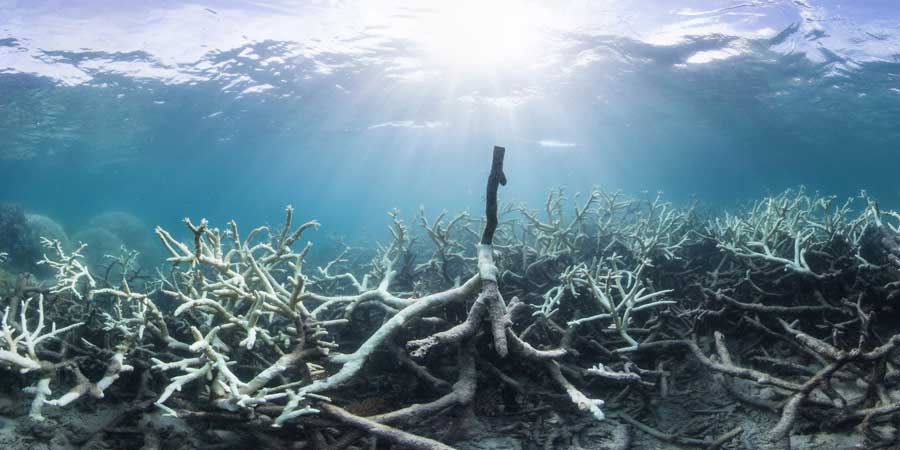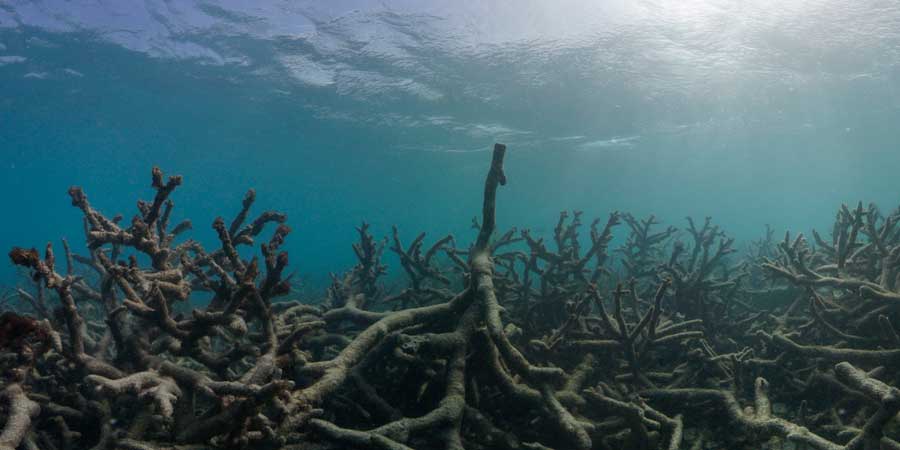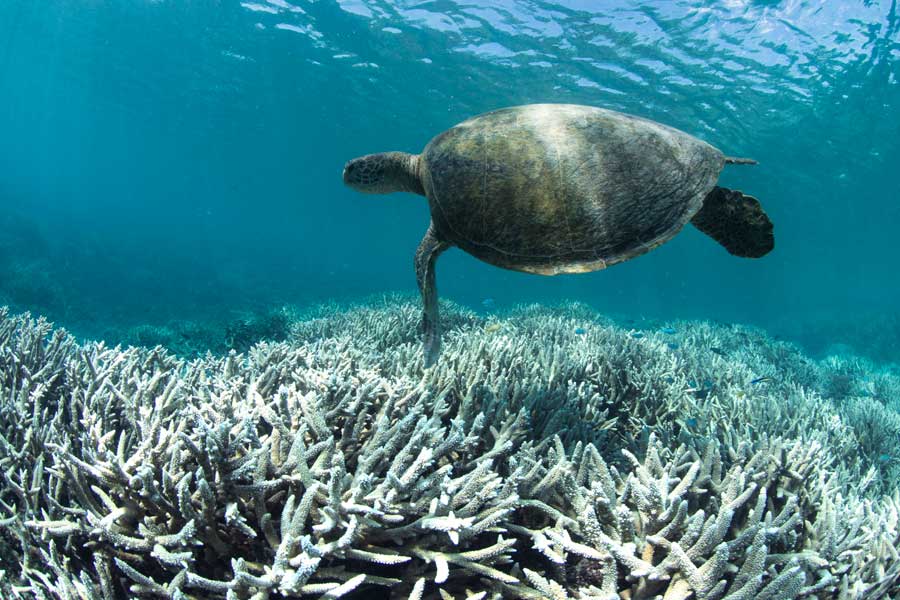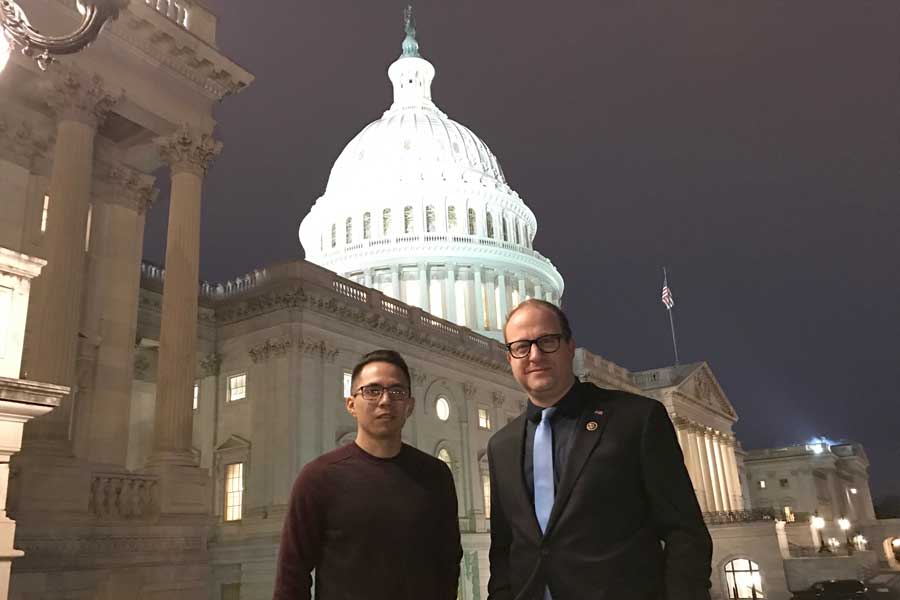Chasing Coral: Film tackles the problem of saving Earth’s greatest source of life
24 May 2017
Boulder filmmakers document the largest dying event of modern corals in the fossil record
By Shannon Burgert For roughly 50 million years, a very cool partnership has existed on the ocean floor. It’s valued at more than a trillion dollars, but it may no longer exist in 30 years. The alliance at risk is a symbiotic relationship between corals and the microscopic algae that live in their tissues. One can’t live without the other. But excess heat compromises that partnership, and coral reefs are perishing at a rate that has exceeded even the direst predictions. Climate change has put us in the midst of the third—and worst—global coral-bleaching event on record. In 2016 alone, 22 percent of the corals on the Great Barrier Reef died. That’s the equivalent of losing most of the trees between Washington, D.C., and Maine.

21st-century Medicine Cabinets
Coral reefs are widely known for the tourism dollars they bring to many countries, but tourism only scratches the surface of their value. “Corals build the structure, they form the habitat for everything that lives on them. As a result you have this entire ecosystem that provides the main source of food to over 500 million people around the world,” explains Mark Eakin, Ph.D., coordinator of the National Oceanic and Atmospheric Administration’s (NOAA’s) Coral Reef Watch program. (From 2000 to 2005, Eakin worked in Boulder as director of the World Data Center for Paleontology.) Reefs also provide shoreline protection from large waves and severe weather, like cyclones.
Hurdles & Hardships
Just stack up the hurdles and it’s no wonder this filming project hadn’t been accomplished before. When Orlowski took on the documentary, he approached another Boulder company, View Into The Blue, to customize a self-cleaning underwater camera system. The cameras would need to endure the harsh environment of water pressure and salinity while gathering footage for a flawless, cinematic-quality film. That would prove to be a notable challenge. Another feat was deciding where to go, and this is where Eakin played a vital role. The crew needed months of lead time to accomplish a number of logistics before filming could begin, including obtaining permits, scouting sites and constructing systems that attached to the ocean floor. Eakin used satellites and climate models to pinpoint locations where temperatures were on the verge of a breaking point toward coral bleaching. But while models can provide important clues about what’s likely to happen in the near future, “Weather gets in the way,” says Eakin. “You can’t predict hurricanes or storm fronts that far in advance.” Yet another challenge.
Then there was the emotional component, which may have been the hardest of all. When the film was conceptualized, the current global crisis had barely reared its head. Camera technician Zack Rago explains, “We started with the notion of ‘We’re going to try to capture bleaching, and we’re going to share the story with the world.’ But never in a million years did I think that a year down the road we’d be on the forefront of what would end up being the largest dying event of modern corals in the fossil record. To see the scale of what was happening as we traveled to all these different places in the world, and to see it happening to an ecosystem that I care so dearly about and that I’ve had a connection with my entire life, it was really hard.”
Despite the odds, the story Chasing Coral tells is not about despair. It’s about standing up and creating change, and Vevers, who set the film in motion, says he has seen so much change for the good of the planet that he’s optimistic. He believes any problem can be solved with a little creativity. It’s just about spreading the story.
Another feat was deciding where to go, and this is where Eakin played a vital role. The crew needed months of lead time to accomplish a number of logistics before filming could begin, including obtaining permits, scouting sites and constructing systems that attached to the ocean floor. Eakin used satellites and climate models to pinpoint locations where temperatures were on the verge of a breaking point toward coral bleaching. But while models can provide important clues about what’s likely to happen in the near future, “Weather gets in the way,” says Eakin. “You can’t predict hurricanes or storm fronts that far in advance.” Yet another challenge.
Then there was the emotional component, which may have been the hardest of all. When the film was conceptualized, the current global crisis had barely reared its head. Camera technician Zack Rago explains, “We started with the notion of ‘We’re going to try to capture bleaching, and we’re going to share the story with the world.’ But never in a million years did I think that a year down the road we’d be on the forefront of what would end up being the largest dying event of modern corals in the fossil record. To see the scale of what was happening as we traveled to all these different places in the world, and to see it happening to an ecosystem that I care so dearly about and that I’ve had a connection with my entire life, it was really hard.”
Despite the odds, the story Chasing Coral tells is not about despair. It’s about standing up and creating change, and Vevers, who set the film in motion, says he has seen so much change for the good of the planet that he’s optimistic. He believes any problem can be solved with a little creativity. It’s just about spreading the story.
Shannon Burgert, Ph.D., teaches fifth grade in Louisville. Through snorkeling and scuba diving, she’s among the lucky 1 percent who’ve seen the incredible diversity of coral reefs.












